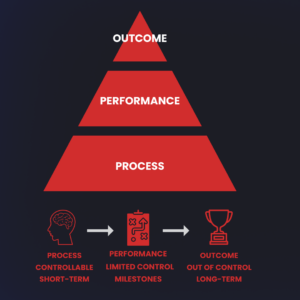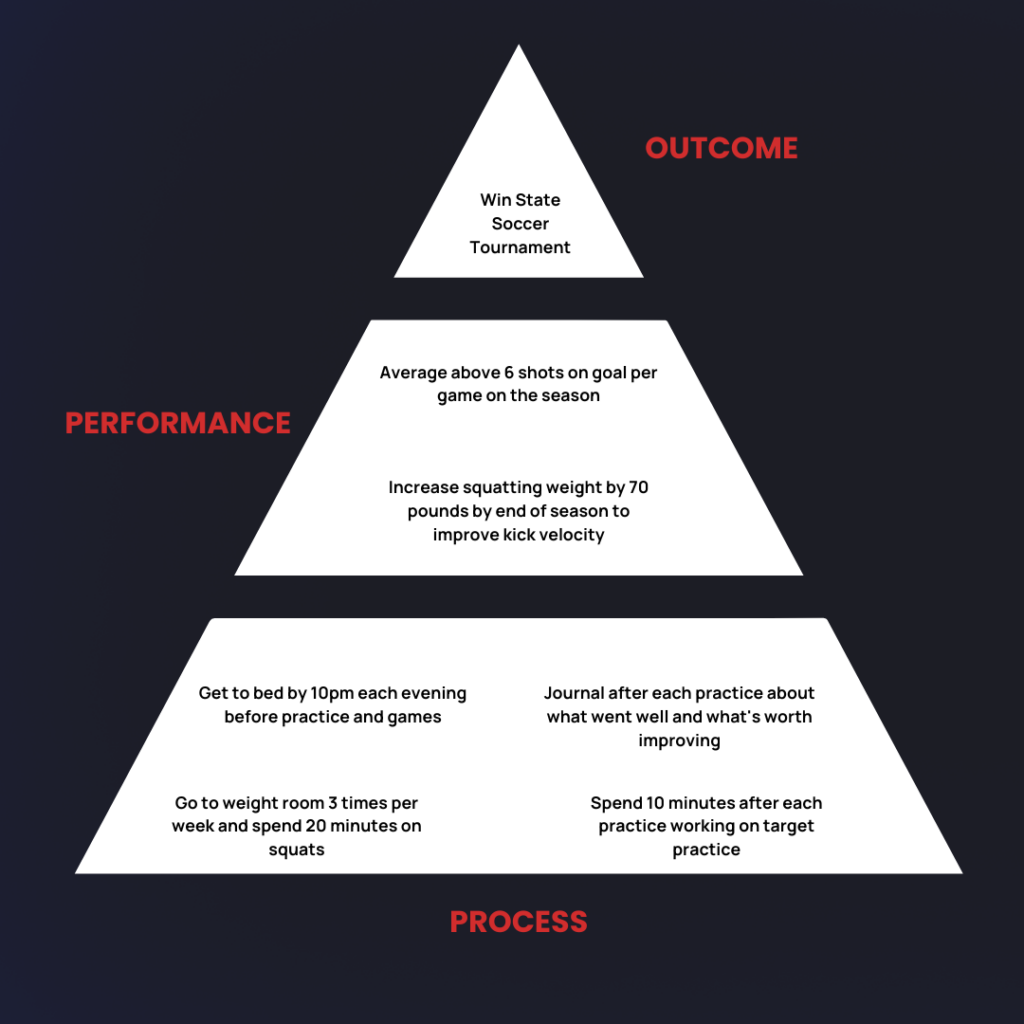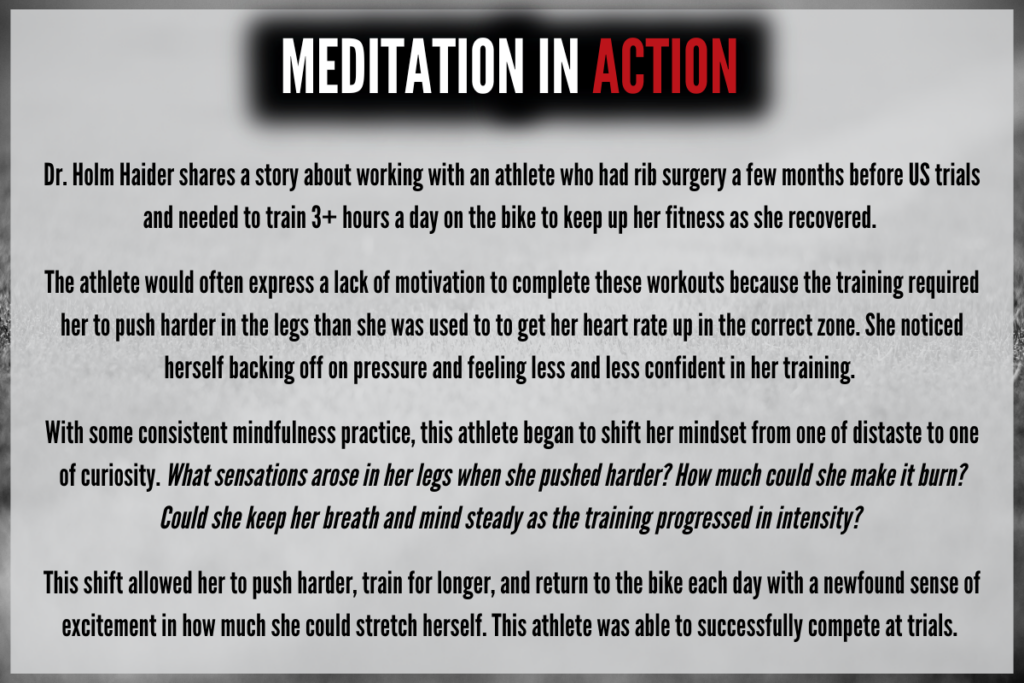In a fast-paced and ever changing world of sport, more and more athletes are recognizing the importance of the mental side of sport. That means that an increased number of athletes, teams, and coaches are leaning on mental performance and sport psychology services.
At Premier Sport Psychology, we’re honored to serve athletes each year ranging from youth to professionals and Olympians. The mental side of sport evolves the good to great and is the final frontier toward reaching peak performance.
All athletes can benefit from sport psychology, and to showcase what sport psychology looks like, how athletes can benefit from it, and what the industry looks like, we’ll be featuring Dr. Kirbi Kidd. one of our postdoctoral providers at Premier.
A native of Birmingham, Alabama Dr. Kirbi (also known as Dr. K) attended college at Mount Holyoke College where she graduated with a degree in Psychology and a minor in Sport Studies. Following her time at Mount Holyoke, Kirbi completed graduate school at Springfield College, earning her master’s degree in Doctorate Counseling Psychology and Athletic Counseling.
Kirbi is passionate about working with athletes of all ages, and has a strong background in collegiate athletics and is passionate about helping athletes find balance, their own narrative, and using their origin story to pave a successful path forward.
Through a series of articles we’ll be showcasing the work that Dr. K does, how she approaches meeting clients where they are at, and insight into the profession of sport psychology.
____________
What are you hoping to showcase through the Postdoc Corner?
I want to showcase my personality, why I’m practicing sport psychology, and what that looks like at Premier. It’s important to showcase the work that we do because it can help others, but is also fun and fulfilling.
What got you interested in sport psychology?
Having those not so good moments in sport. I played basketball growing up and had a moment where I wasn’t playing much and wasn’t practicing. Because I was on the sidelines quite a bit I saw quite a few things. I saw poor coaching, anxiety, poor communication, and saw teammates work around that and do their own thing. At the same time I had to wrestle with the question of “why am I not playing?” So I saw all the dynamics. In that time with that team I decided to pursue sport psychology to pursue some of the answers that I was questioning in that time in my life.
Sport is very human and a microcosm of life. What would you say to a younger version of yourself?
There are many ways to play the game. I didn’t know that then and being convinced that there’s only one way and when you aren’t meeting that way, you’re wrong. There are so many different ways to get up the court, to draw up a play, and to approach the mental game.
That leads into a piece of advice that I’d give to people interested in going into the profession. There’s no one way to do this. There’s no one way to get into this discipline (you can pursue different majors and programs), there’s no one way that’s perfect and absolute when it comes to carrying out your practice. There is one way not to do it…make it about you.
What were you doing before Premier?
Before this I was wrapping up my doctorate in Counseling Psychology (PsyD) from Springfield College in Springfield, Massachusetts. I ended that experience with my internship at Mississippi State University, where I had the opportunity to work with their athletic department doing both clinical and mental performance work.
You were trained in Counseling Psychology and are now working in mental performance and sport psychology. What has that experience been like?
Laughs…..The shift has been a humbling one, but an intentional one. It has taken me a while to drum up meetings with Premier’s clientele where they’re more apt to focus on performance, although we do have licensure to focus on and provide traditional clinical needs when appropriate. It’s been exposing and humbling to objectively notice that I am primed to call out the clinical (side of psychology) first and then lean into the performance coaching. However, in my experiences so far, the client often wants and needs performance coaching first. Oftentimes we’re working with adolescents who want more direction and instruction whereas my experience comes from college-aged adults who have a little bit more life under them that can point to their history. Some kiddos don’t have that in full just yet (all the history or language), and it’s ok. It’s also positioned me to partner with anyone and everyone and lean into versatility, feedback, and suggestions.
What makes your position difficult?
Deciding to stay open to what each experience will bring. You may have an idea or expectation of what a situation may bring, but mindfully pausing to stay open, considerate, and ask questions will shift and help you better understand the expectation. It’s hard because it’s something that you consciously have to manage. It’s humbling because you often have to open your mind to new ideas and ways of thinking, doing, and applying that may be very different from previous experiences.
Premier operates very differently from a college counseling center or athletics department. I’m used to working with Titanium (a favored college EMR system) and tracking notes, sessions, signatures and now I’m working with three different EMR (Electronic Medical Records) systems. Could I choose to get frustrated by that? Absolutely. But do I embrace it and recognize that it’s a part of growth? YES! Being open to change and becoming uncomfortable is what will make you grow and become a better clinician and mental performance coach.
What keeps you going every day?
Overall, what fills my cup is having a growth mindset and leaning into the transition from my clinical background to mental performance, and then fusing the two best. As I’m mindfully noting changes for me, and learning where I can stretch, I know that I’m growing and being able to point to that growth; and hearing from others about it is very fulfilling. We’re very community-based here and I’ve certainly felt that. Just as Premier serves athletes of all backgrounds, ages, and experiences, our team has so many different experiences, approaches, and perspectives that come together for the common goal of serving others.



